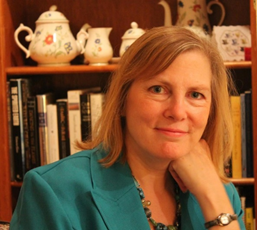By Val Walker
Could anything make you feel lonelier than having no one to take you home after a medical procedure? Before the day of the procedure, single older adults scramble to find a ride for their colonoscopy or endoscopy, asking friends, neighbors, family members, colleagues, church members—you essentially go begging—but no one can be pinned down to pick you up. These days, medical centers have moved as much of their services to outpatient procedures and day surgeries where patients are moved through the pipes like an assembly line. So, they expect their patients to have a trusted ride at the ready to sign off so they can whisk you through and release you to someone “responsible.” This is especially tricky when a patient has anesthesia and cannot simply take an Uber or hire a ride service, or use public transportation, or use the volunteer ride services that senior centers offer.
For single older adults like me, I had to reschedule my endoscopy four times because my friend or neighbor or chosen ride fell through at the last minute. I was given hurried, dismissive advice by my medical center to just call my local senior center or call a medical transport service. Sometimes these services had been discontinued, or did not qualify, or cost more than $300 for a ride. There is a pervasive misconception that any older adult can simply call their local senior center or grab a volunteer from church for a ride to a medical appointment. But I told everyone who so casually handed me lists of ride services that a procedure involving anesthesia in an outpatient facility would not accept a driver from any organization due to liability concerns.
Some of us stranded seniors who’ve fallen through these cracks have flat out given up on bothering to get ourselves the care we need.
This flakiness and chaos with finding reliable rides caused my biopsy to be delayed for four months. I was feeling more and more frustrated and worried, but far worse, I was falling into a pit of feeling lonelier, downright abandoned (does anyone give a rat’s ass?) that no one could keep their commitment or go out of their way to help me get that long-overdue biopsy. Did my friends or anyone care that abnormal cells were already growing in those membranes? I already had thyroid cancer four years ago and I sorely needed this next biopsy for my Barrett’s esophagus and abnormal cell changes in the membranes of my throat. But I could find no one, after a good 60 attempts to find people for a ride. Sure, I was “well-connected,” but could I count on anyone? Finally, I resorted to scheduling a home health agency and having to pay $120 just for a ride home (and that’s pretty cheap these days). Paying for this certainly meant I had to go without other basic needs (had to use the food pantry).
Not only is this predicament unfair financially and medically for isolated adults who are forced to delay important, perhaps life-saving procedures—it hurts us most in our hearts and makes us feel uncared for and unloved. Yes, I am being emotional here, but I believe most of my fellow solo agers out there on their own fighting for basic health care feel just as lonely and abandoned. And to tell the truth, I’m sure I’m not the only one who was haunted by an inner demon nagging at them saying, “So who cares if these cells turn into cancer—maybe it’s time to get out of Dodge.”
And yet, with just a little more help from those friends around us, an early cancer can be spotted by one single act of kindness—a ride home from an endoscopy.
So, I’ve said it: Our health care system can make solo agers feel even lonelier when left to their own devices to scrounge up someone to drive them home from an overdue biopsy. And if we cannot find anyone available or willing without having to pay for them to help us, our sense of isolation and abandonment might weaken our will to keep fighting—and our will to live.
That’s what social isolation really means. That’s one way it can kill us. What do you think?
Val Walker is a contributing blogger for Psychology Today and the author of 400 Friends and No One to Call, released in 2020 with Central Recovery Press. Her first book, The Art of Comforting (Penguin/Random House, 2010), won the Nautilus Book award and was recommended by the Boston Public Health Commission as a guide for families impacted by the Boston Marathon Bombing. Val received her MS in rehabilitation counseling from Virginia Commonwealth University and is a rehabilitation consultant, speaker, and educator. Her articles and Q&As have appeared in AARP, Caregiver Space, Babyboomer.com, Caregiver Solutions, Time, Good Housekeeping, Coping with Cancer, Boston Globe Magazine, Belief Net, Marie Claire, and Sweety High. Keep up with Val at www.ValWalkerAuthor.com































